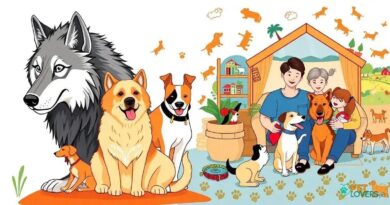What is Shedding
What is Shedding?
Shedding refers to the natural process by which dogs lose their old or damaged hair. This phenomenon occurs in various breeds and is influenced by factors such as genetics, climate, and overall health. Understanding shedding is crucial for dog owners, as it helps them manage their pet’s grooming needs and maintain a clean living environment.
The Shedding Cycle
Dogs experience shedding in cycles, which can be categorized into two main types: seasonal and continuous shedding. Seasonal shedding typically occurs in spring and fall, when dogs lose their winter or summer coats, respectively. Continuous shedding, on the other hand, happens throughout the year, albeit at a slower rate. Recognizing these patterns can help owners prepare for the amount of fur they might encounter in their homes.
Factors Influencing Shedding
Several factors can influence the amount and frequency of shedding in dogs. Genetics plays a significant role, as some breeds are known to shed more than others. Additionally, environmental factors such as temperature and humidity can affect shedding patterns. A dog’s diet, health status, and stress levels can also contribute to excessive shedding, making it essential for owners to monitor their pets closely.
Common Breeds and Their Shedding Patterns
Different dog breeds exhibit varying shedding patterns. For instance, Labrador Retrievers and German Shepherds are known for their heavy shedding, especially during seasonal changes. In contrast, breeds like Poodles and Bichon Frises are considered low-shedding due to their unique coat structures. Understanding the shedding tendencies of specific breeds can help potential dog owners make informed decisions when choosing a pet.
Managing Shedding at Home
To effectively manage shedding, dog owners can implement several strategies. Regular grooming, including brushing and bathing, can help remove loose fur and reduce the amount of hair that ends up on furniture and floors. Investing in high-quality grooming tools, such as de-shedding brushes and grooming gloves, can make the process more efficient and enjoyable for both the dog and the owner.
Health Issues Related to Shedding
While shedding is a normal part of a dog’s life, excessive shedding can sometimes indicate underlying health issues. Conditions such as allergies, skin infections, or hormonal imbalances can lead to increased hair loss. If a dog is shedding significantly more than usual or showing signs of skin irritation, it is essential for owners to consult a veterinarian to rule out any potential health problems.
The Role of Nutrition in Shedding
A dog’s diet plays a vital role in maintaining a healthy coat and minimizing shedding. Providing a balanced diet rich in essential fatty acids, vitamins, and minerals can promote healthy skin and fur. Supplements, such as omega-3 fatty acids, can also help reduce shedding and improve overall coat condition. Owners should consult with their veterinarian to determine the best dietary options for their pets.
Seasonal Shedding Tips
During peak shedding seasons, dog owners can take specific steps to manage the influx of fur in their homes. Increasing the frequency of grooming sessions can help keep shedding under control. Additionally, using air purifiers and vacuum cleaners designed for pet hair can significantly reduce the amount of fur that accumulates in living spaces. Establishing a regular cleaning routine can also help maintain a fur-free environment.
Understanding Shedding vs. Hair Loss
It is important to distinguish between normal shedding and abnormal hair loss. While shedding is a natural process, excessive hair loss can be a cause for concern. If a dog is experiencing bald patches, thinning fur, or changes in coat texture, it may indicate a more serious issue that requires veterinary attention. Understanding the difference can help owners take appropriate action when needed.



